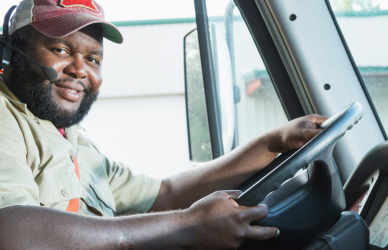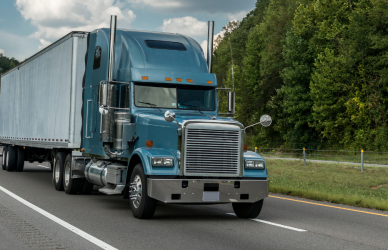Fleets are increasingly turning to video-based safety systems to prevent accidents and exonerate drivers, yet implementing this technology heavily relies on gaining driver acceptance.
“As long as you’re upfront with the drivers and building the trust with them on the true use and benefit of the systems, nine times out of 10, they are bought in,” said Lynn Berning, risk and compliance manager for Tucker Freight Lines, based in Dubuque, Iowa.
Tucker Freight Lines, for instance, has adopted road-facing and driver-facing cameras from Isaac Instruments, successfully leveraging the video evidence to exonerate a driver soon after the cameras were installed in 2018. According to Jean-Sébastien Bouchard, co-founder and EVP of Sales at Isaac Instruments, having video footage at the scene can significantly impact the way crash reports are documented.
Rajesh Rudraradhya, CTO at Lytx, emphasized that driver exoneration often serves as a turning point for gaining driver acceptance.
“Then, the driver becomes the voice of the product, and they start to advocate for it,” he said. “The other example is when they get the timely alerts where they know they would have gotten into a collision without them.”
Samsara, another technology provider, identified transparency as a key element in obtaining driver support, ensuring drivers understand the purpose and function of the cameras.
Rio Valley Biofuel Transport openly communicates with drivers about camera usage, positioning them as tools for safety. Mark Schedler, Senior Editor at J.J. Keller & Associates, suggests fleets share statistics with drivers to underscore the positive impact of video footage on safety programs.
“We really value and honor their privacy,” said Maridee Jenkins, compliance and safety lead for the fleet. “We’re not trying to spy on our drivers. A recording is only triggered by a critical event. It isn’t streaming where we can flip it on and watch them. … “Our CEO said that sending out our drivers without those two cameras would be like sending out our hazmat drivers without their [personal protective equipment].”
Mark Schedler, senior editor for transport at regulatory compliance company J.J. Keller & Associates, urges fleets to share data and statistics with drivers to make them more comfortable with the tech.
“Drivers need to see the value in a dashcam coaching program, including driver-facing cameras, if used,” he said. “Based on [Department of Transportation] crash statistics, the passenger car driver is at fault in at least 70% of fatal truck-passenger vehicle-involved crashes.”
A study by the American Transportation Research Institute found that driver-facing cameras faced an 87% approval rating when carriers used the footage for enhancing safety programs, driver coaching, and training.
Effective coaching, according to Abhishek Gupta, VP of Product at Motive, should prioritize positive reinforcement over negative criticism, emphasizing the importance of accurate video data for driver trust.
Privacy concerns are addressed through features like privacy mode, turning off inward-facing cameras when not needed. Fleets can configure recording parameters, such as activating cameras only at specific speeds, and some systems utilize AI to analyze driver behavior without recording video.
At the end of the day, cameras prove how much carriers care about driver safety.
“The risk of being on the road is undeniable, and everyone wants to be good at their job. Feeling like you are improving and seeing the incident statistic going down shows that you’re winning as a team and drives cohesion,” Samsara’s Wiegand said. “It creates a more engaging work environment.”
Source: Transport Topics











